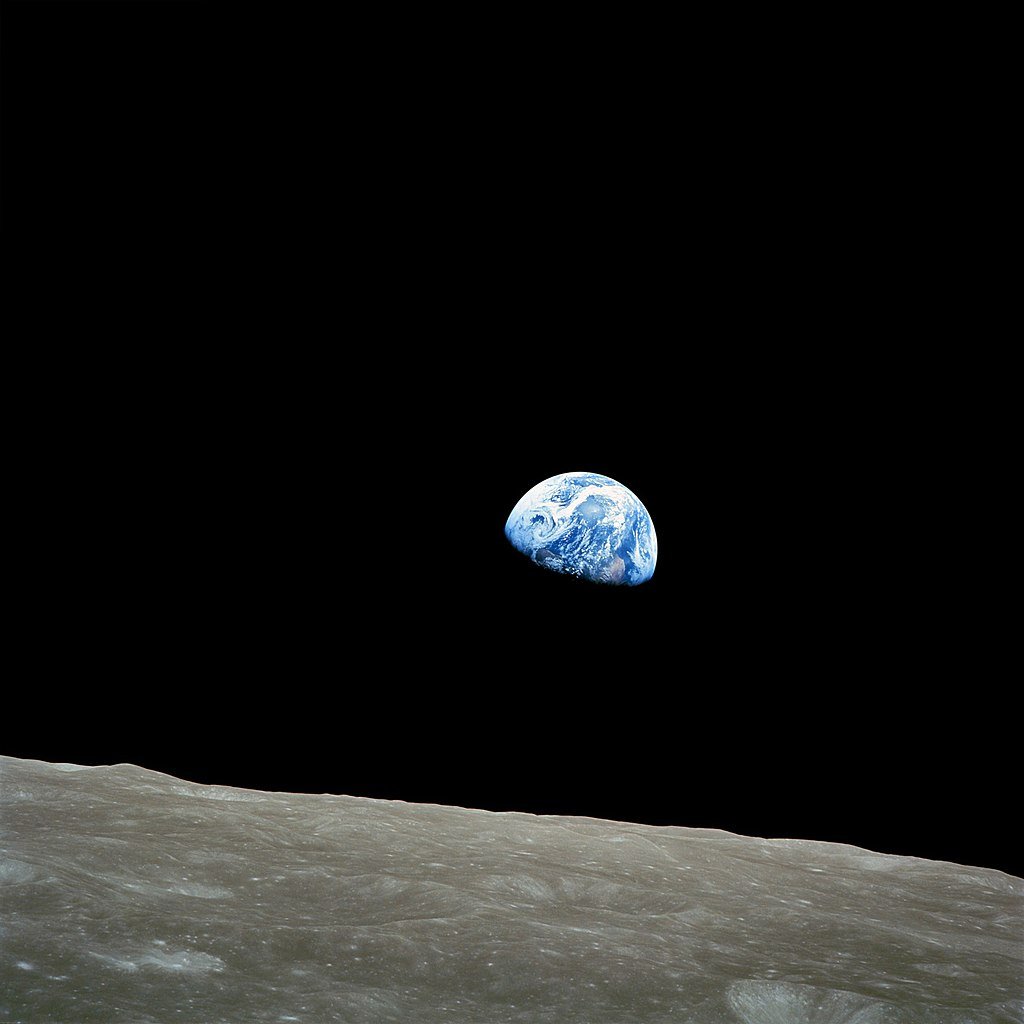20 February 2023
The word earth dates back to the Old English eorþe, and the Old English word carried the basic meanings we still use today. It can refer to the ground or the soil, and it can refer to the globe, to the planet—although those living in the medieval period did not classify the earth as one of the planets, cf. planet.
We can see earth being used to mean the ground in this passage from Beowulf, in which the titular hero is fighting Grendel’s mother:
Eft wæs anræd, nalas elnes læt,
mærða gemyndig mæg Hylaces:
wearþ ða wundenmæl wrættum gebunden
yrre oretta, þæt hit on eorðan læg,
stið ond stylecg; strenge getruwode,
mundgripe mægenes.(Again, Hygelac’s kinsman was resolved, not at all slow to courage, glory in mind: the angry hero cast away the damascened weapon, bound with ornaments, so that it lay on the earth, stiff and steel-edged; he trusted in his strength, in the hand-grip of the mighty man.)
And we can see earth used to mean the globe in this passage from the poem Exodus, in which God reveals himself to Moses on Mount Sinai:
Ða wæs forma sið
þæt hine weroda god wordum nægde,
þær he him gesægde soðwundra fela,
hu þas woruld worhte witig drihten,
eorðan ymbhwyrft and uprodor,
gesette sigerice, and his sylfes namen,
ðone yldo bearn ær ne cuðon,
frod fædera cyn, þeah hie fela wiston.(That was the first time the God of Hosts spoke to him, where he said many true and wondrous thing to him, how the wise Lord created the world, the circle of the earth and the heavens above, establishing his victorious kingdom and his own name, which, though they knew much, the sons of men, kin of the wise patriarchs, did not know before.)
Contrary to popular belief, those living in antiquity and the Middle Ages did indeed know the earth was round. Prior to Copernicus, the idea of a heliocentric solar system was not widely accepted, but people knew full well the earth was a sphere. Here is a demonstration of this in Ælfric’s De temporibus anni (About the Seasons of the Year), written in the closing years of the tenth century, in which the monk compares the globe to a pine nut, indicating both that it is not flat and that it is insignificant in relation to the scope of the cosmos:
Witodlice se emnihtes dæg is eallum middanearde an & gelice lang & ealle oðre dagas on twelf monðum habbað mislice langsumnysse; On sumum earde hi beoð lengran on sumum scyrtran for ðære eorðan sceadewunge & ðære sunnan ymbgange; Seo eorðe stent on gelicnysse anre pinnhnyte & seo sunne glit onbutan be Godes gesetnysse.
(Truly, the equinox day is unique in all middle-earth and equally long, and all other days in the twelve months have various lengths. In some lands they are longer, in some shorter, because of the overshadowing of the earth and the circuit of the sun. The earth stands in likeness of a pine nut, and the sun glides around by God’s decree.)
Ælfric also refers to the earth as middanearde, or in its later forms middel-erþe or middle-earth, so called because it was considered to be in between heaven and hell. J.R.R. Tolkien adopted this medieval term as the name for his fantasy world in The Hobbit and The Lord of the Rings. Tolkien would write of his naming in notes he made about W.H. Auden’s 1956 review of the third book in the trilogy, The Return of the King:
I am historically minded. Middle-earth is not an imaginary world. The name is a modern form (appearing in the 13th century and still in use) of midden-erd > middel-erd, an ancient name for the oikoumenē, the abiding place of Men, the objectively real world, in uses specifically opposed to imaginary worlds (as Fairyland) or unseen world (as Heaven or Hell). The theatre of my tale is the earth, the one in which we now live, but the historical period is imaginary. The essentials of that abiding place are all there (at any rate for inhabitants of N.W. Europe), so naturally it feels familiar, even if a little glorified by the enchantment of distance in time.
Tolkien’s dating to the thirteenth century refers to the Middle English and Present-Day forms, as he includes the Old English form in his discussion. He was too good a scholar of Old English to have missed the earlier form.
Sources:
Ælfric. Ælfric’s De Temporibus Anni. Heinrich Henel, ed. Early English Text Society, O.S. 213. London: Oxford UP, 1942, 46, 6.4–9.
Dictionary of Old English: A to I, 2018, s.v. eorþe, n.
Fulk, R.D., Robert Bjork and John D. Niles, eds. Klaeber’s Beowulf, fourth edition. Toronto: U of Toronto Press, 2008, 52–53, lines 1529–1534a.
Krapp, George Philip. “Exodus.” The Junius Manuscript. Anglo-Saxon Poetic Record 1. New York: Columbia UP, 1931, 91, lines 22–29.
Middle English Dictionary, 2019, s.v. erthe, n.(1), middel-erthe, n.
Oxford English Dictionary, third edition, November 2010, s.v. earth, n.1; March 2002, s.v. middle-earth, n. and middenerd, n.
Tolkien, J.R.R. “183. Notes on W.H. Auden’s Review of The Return of the King” (1956?). The Letters of J.R.R. Tolkien. Humphrey Carter, ed. Boston: Houghton Mifflin, 2013. Kindle edition.
Photo credit: Bill Anders, 1968, NASA. Public domain photo.

